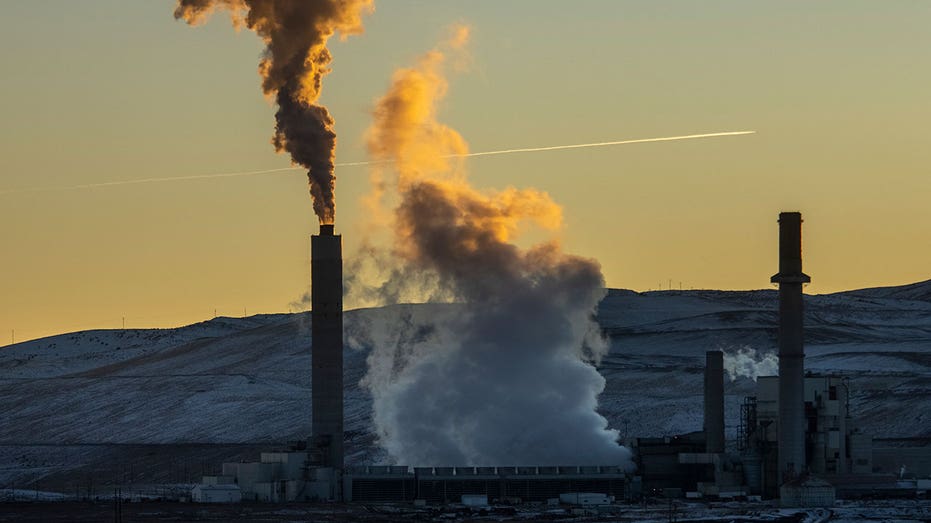Trump designated coal as a mineral: What does that mean for the industry?
Trump signed the executive order and others on coal earlier in the week
Expert says America’s energy infrastructure is in ‘hospice,’ China is capitalizing
‘The Big Money Show’ panelists discuss the Trump administration’s plan to counter China’s coal production.
President Donald Trump is looking to give coal a lift with executive orders he inked on Tuesday.
In one of the executive orders, the president instructed the National Energy Dominance Council’s head to "designate coal as a ‘mineral’ under Executive Order 14241," a measure Trump signed in March that the White House said at the time would "boost American mineral production" and "streamline permitting."
Reclassifying coal as a mineral "opened up the door to speed up the permitting process" and "make more federal lands eligible for producing coal," according to Price Futures Group senior market analyst and FOX Business contributor Phil Flynn.

Coal on barges in Pittsburgh, on Monday, Sept. 9, 2024. (Justin Merriman/Bloomberg via Getty Images / Getty Images)
"It also opens coal production and usage to a whole wide range of financial incentives, loans and subsidies that can support the production and exporting [of] U.S. coal," he told FOX Business. "This is going to make coal more competitive with other fuel sources and will be a positive, because U.S. production of coal is cleaner than other countries and our use of coal is also cleaner and better for the environment as well."
TRUMP LAUNCHES ‘DECISIVE COUNTERSTRIKE’ ON DEM STATES THAT ‘WEAPONIZED’ COURTS AGAINST COAL: EXPERTS
The Tuesday executive order also told agencies to "identify coal resources" on federal lands for leasing, reduce "barriers" to coal mining and "rescind any agency policies that seek to transition the Nation away from coal production or otherwise establish preferences against coal as a generation resource," among other measures, according to a White House fact sheet.
In the fact sheet, the White House argued the order "will increase our energy supply, lower electricity costs, stabilize our grid, create high-paying jobs, support burgeoning industries, and assist our allies." It also said coal would help provide power to address growing demand from manufacturing and AI data centers.
Flynn told FOX Business he thought the executive order and reclassifying coal as a mineral could help lift coal production in the U.S. "by at least 10%."
"Others are more skeptical, believing that even with the Trump administration’s actions, it may be insufficient for coal. People will be concerned about potential regulation reinstatements," he said. "However, there is optimism that this could revive the US coal industry and potentially reopen closed coal plants, which may lower costs for consumers and increase the stability of the US power grid."
U.S. production of coal amounted to 512.1 million short tons in 2024, according to preliminary data from the U.S. Energy Information Administration (EIA). That marked an over 11% decline from the prior year.
GET FOX BUSINESS ON THE GO BY CLICKING HERE
In its "Annual Coal Report" released Tuesday, the EIA said the U.S. produced "less than half of the amount" of coal in 2023, compared to 2008.

A mixture of steam and pollutants are emitted from the Naughton coal-fired power plant on November 22, 2022, in Kemmerer, Wyoming. (Natalie Behring/Getty Images / Getty Images)
"Rising mining costs, increasingly stringent environmental regulations, and competition from other sources of electric power generation have contributed to domestic coal production declines," it said.
Natural gas and renewable energy, which are cleaner and cheaper than coal, have been on the rise as sources of power.
"Coal will become more competitive with other energy sources, but at the same time, the demand for energy is going to rise dramatically in the years to come," Flynn told FOX Business. "Whether you like it or not, the global demand for coal is going to break records so we might as well produce it where we produce it and use it cleaner than anywhere else in the world."
In the U.S., fossil fuels accounted for 58% of energy generation last year, according to a report recently released by energy think tank Ember. Of that, coal generated about 14.9%, while 42.% came from gas.
NEARLY 41% OF GLOBAL POWER CAME FROM CLEAN ENERGY LAST YEAR
Meanwhile, clean energy was responsible for 42% of America’s power generation in 2024, the report said.
Ongoing competition with natural gas and renewable energy sources is expected to result in American coal production hitting 467 million short tons, according to the EIA.




















